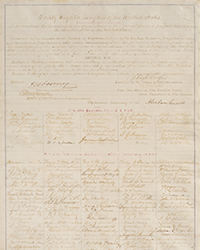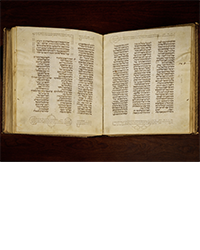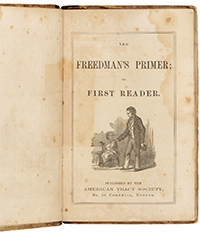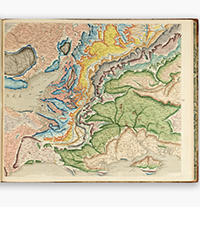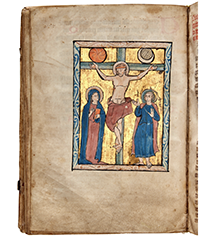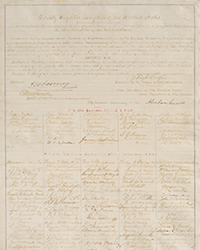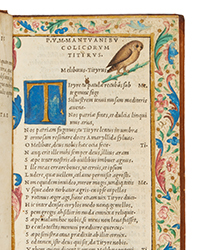Last month, we reviewed a catalogue of books that appeared in the noted Confederate bibliography “In Tall Cotton.” This month, we review The George S. MacManus Company's follow-up, In Taller Cotton. This too is based on a bibliography of the same name. The original “In Tall Cotton” was published in 1978. Almost three decades and a lot of thought later, the second bibliography, “In Taller Cotton,” was published. It consists of 200 items that were either missed from the first bibliography, or published after the release of the first bibliography. So here we go again, as this time MacManus has published a catalogue of 127 items that appear in the bibliography “In Taller Cotton.” It's back to the Old South when the living-is-easy antebellum times were replaced by war and emancipation.
If anyone thinks war is something glorious, Henry Robinson Berkeley will bring you back to reality. He saw more than anyone wants see. MacManus quotes, “Berkeley pitied the Union corpses which had been stripped by the poorly provisioned rebels.... He observed many shocking sights: seventy-nine dead North Carolinians lined in a row apparently killed by a single barrage of musketry; amputated appendages piled within a few feet of his tent; a Yankee body torn in half...” His book is Four Years in the Confederate Artillery: The Diary of Private Henry Robinson Berkeley, published in 1961. There must be a better way to resolve disputes, but even today we still resort to this one. Item 7. Priced at $40.
This is a somewhat atypical Confederate's book. For starters, the first edition was published in Paris. The explanation is that the soldier-author was born in Paris, though evidently an American. The circumstances of his family being there and his coming to America are not clear, but he came to America and felt duty-bound to serve the Confederacy. The book is Letters of a Confederate Officer to His Family in Europe, published in 1890. The letters range from February 9 1864 to May 6 1865. They provide observations of Virginia during the last year of the war through Appomattox. Richard Washington Corbin survived the war and lived until 1922. It was published in “an extremely small edition for presentation to family and friends.” As such, it is one of the rarest Confederate accounts. It contains a full-page unsigned inscription by the author's mother, Agnes R. Corbin, recipient of many letters, about the author and the circumstances of publication by his sisters. Item 30. $6,000.
This is a biography of John Taylor Wood: Sea Ghost of the Confederacy, by Royce Gordon Shingleton, published in 1979. Wood was an officer in the U.S. Navy. His father, Robert Crooke Wood, was an M.D. who served in the U.S. Army, heading the medical service in the Department of the West during the Civil War. John Taylor Wood's mother was the daughter of President Zachary Taylor, who at one point said he would hang anyone in rebellion against the Union. However, Zachary was long gone when John Taylor Wood switched sides and joined the Confederacy. Perhaps his being the nephew of Jefferson Davis played a role there. He was a successful naval captain during the war, taking down several ships. As the war wound toward its conclusion, Wood accompanied Davis in his attempt to escape capture. He was briefly taken captive, escaped, and went to Cuba. He next moved to Nova Scotia, but unlike so many former Confederates who took an oath of loyalty and returned, Wood never did. He died in Canada in 1904. Item 109. $25.
One of then greatest losses of life in the Civil War came 2½ weeks after Appomattox. It did not occur on the battlefield. Not a shot was fired. Thousands of Union prisoners had been released in the South at war's end. Many were in very bad physical shape. They needed to get home. One method was by steamship. Steamships were hired in the South to transport ex-prisoners up the Mississippi to Illinois. One such ship was the Sultana. One of its boilers had sprung a leak, but the owner did not have enough time to repair it, so they put a temporary patch over the leak. Afraid of losing the job to a competitor, which paid about $5 per head, she took on passengers at Vicksburg anyway and headed north. Around 2,100 soldiers were crammed onto the ship designed to hold 376. All proceeded well until she reached a point seven miles north of Memphis. Then, one after the other, the boilers suddenly exploded. The fire spread quickly. The top deck crashed down on the middle deck. Some were able to escape into the river, but those in weakened physical condition were unable to swim. Highly flooded river conditions made survival even more dangerous, with most who survived having been picked up by other ships who came to the rescue. It is not known how many died, as estimates range from 1,100 – 1,800+, most likely nearest the top number. It was the worst maritime disaster in American history. The book is The Sultana Tragedy, America's Greatest Maritime Disaster, by Jerry O. Potter, published in 1992. Item 100. $20.
Thomas Jonathan Jackson may not be a name familiar to Confederate collectors, but add his nickname, “Stonewall,” and everyone knows him. Stonewall Jackson was one of the most successful Confederate generals on the battlefield. His nickname comes from his reputation of being an unmovable force. His perfect record was bolstered by the fact that he did not live to see the Union gets it act together, Grant take charge of the army, and the war turn. His loss certainly hurt the Confederate cause, though it is extremely unlikely his survival would have altered the outcome, though it might have delayed it. He died on May 10, 1863, killed by friendly fire. He and some men were returning at night and sentries mistook them for Union men. Item 69 is Stonewall Jackson and the American Civil War by George Henderson, published in 1898. $1,500.
The George S. MacManus Co. may be reached at 610-520-7273 or books@macmanus-rarebooks.com. Their website is www.macmanus-rarebooks.com.


